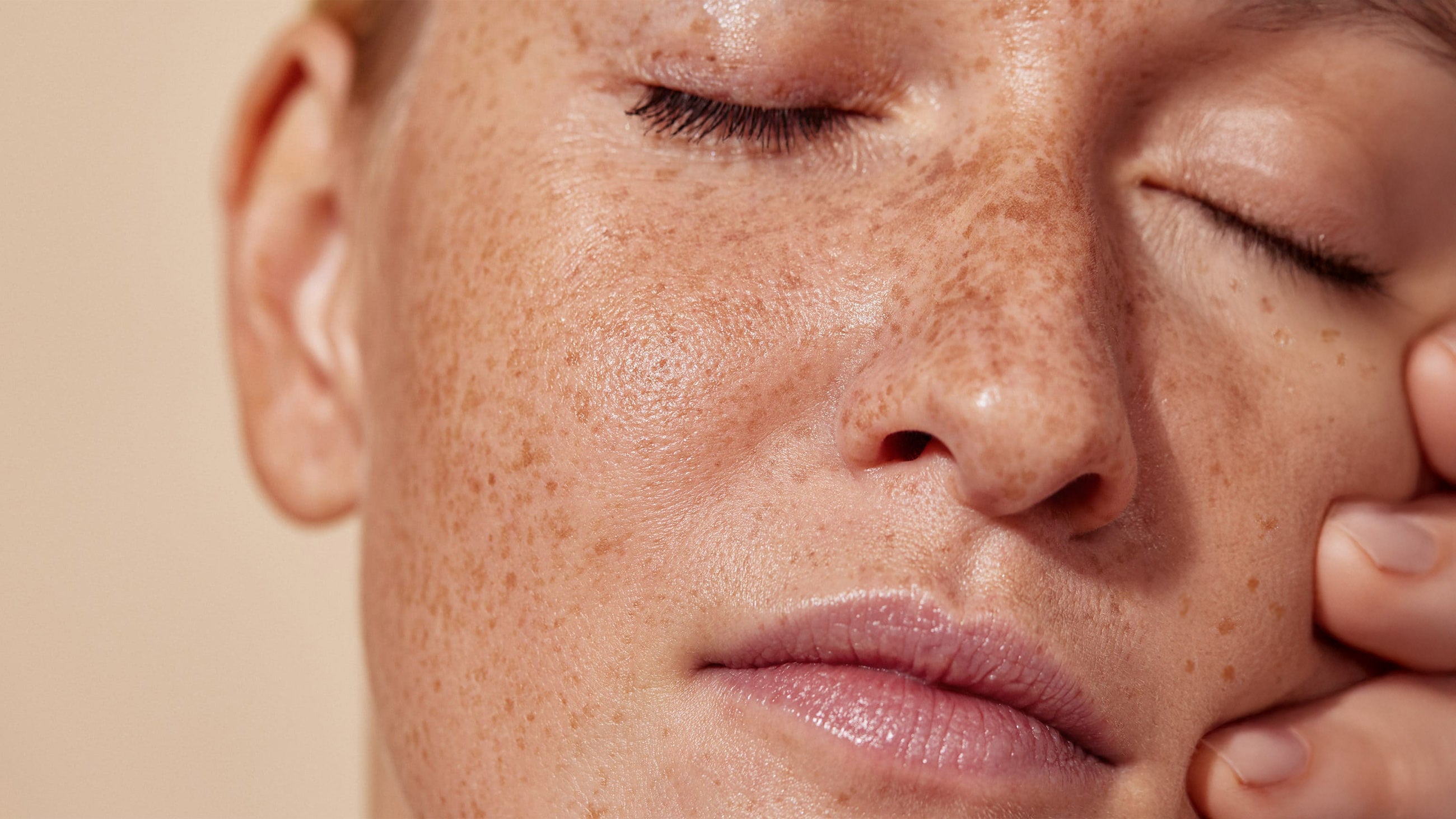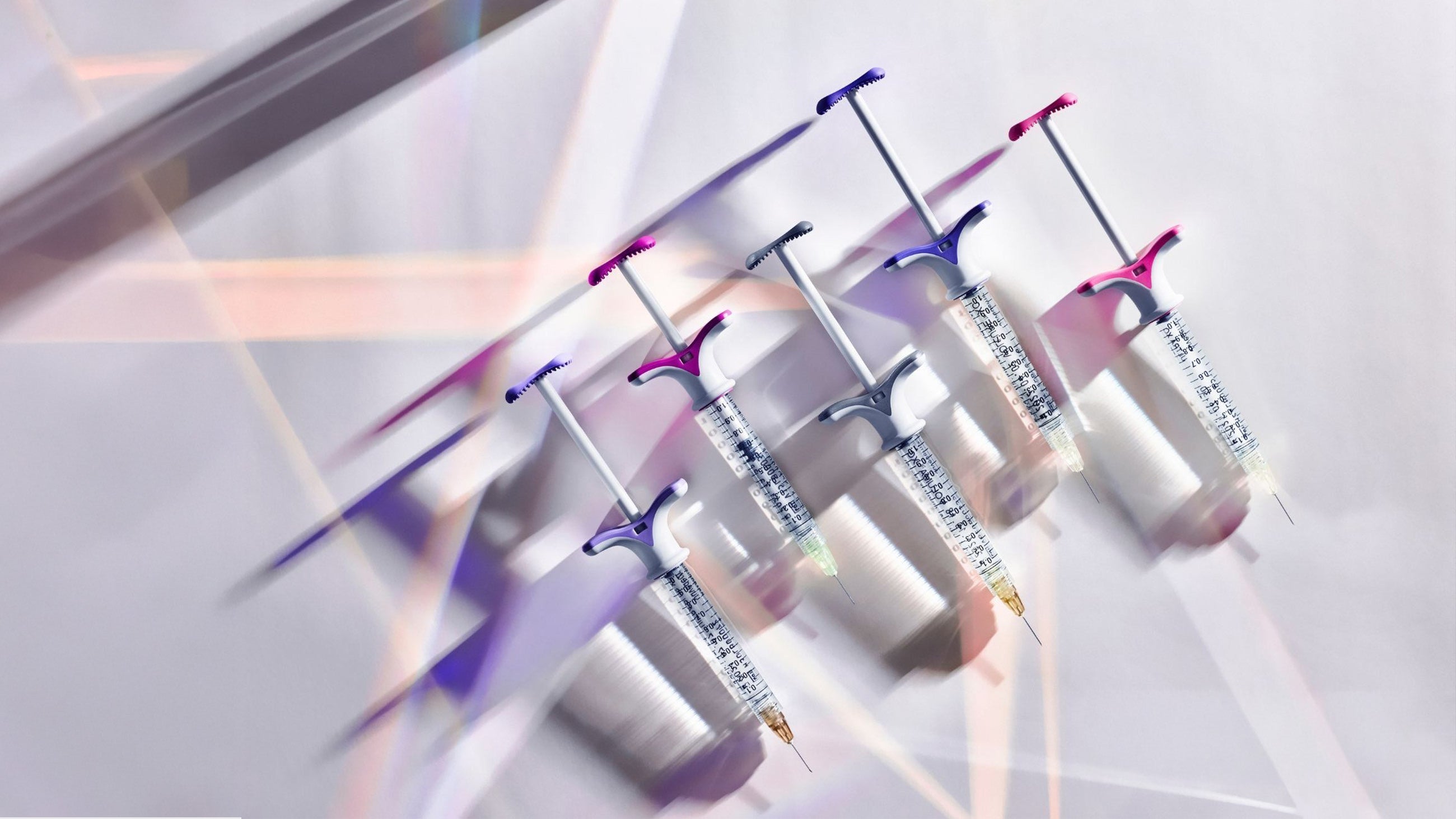You’re not imagining it... spots, fine lines, dull tone, and that “crepey” look tend to show up all at once. As a nurse practitioner in aesthetics, I see this daily. The good news: repairing sun damage is absolutely doable with smart, consistent habits and medical-grade skincare. Below is a simple plan you can start today, with clear product guidance and pro tips from clinic experience.
What you’ll get in this guide:
- A 5-step daily plan that’s easy to stick to for repairing sun damage
- Exactly where Fix Studios medical-grade products fit
- When to expect results and how to avoid irritation
- Optional “fast-track” pro treatments that amplify results
- Clear FAQs for common concerns
Step 1: Renew Gently with Smart Exfoliation (2–4x/week)
Sun damage slows natural cell turnover, so dullness and uneven texture linger on the surface. Gentle, regular exfoliation helps remove that buildup so brighter, healthier-looking skin can come through.
How to do it well
- Start 2x/week. Work up to 3–4x if your skin tolerates it.
- Prefer chemical exfoliants (AHAs like glycolic or lactic) over harsh scrubs.
- Avoid mixing with retinoids on the same night if you’re sensitive.
Fix Studios picks
- Lacera Lactic Radiance Serum – effortless, even application for texture and glow.
- Green Tea Purity Antioxidant Cleanser - good on “buffer” days to maintain clarity without over-doing it.
Pro tip: Pair exfoliation with hydration right after to keep the barrier calm and happy.

Step 2: Brighten + Defend with Vitamin C (AM)
Vitamin C is one of my favorite tools for repairing sun damage because it tackles multiple issues at once; uneven tone, early wrinkles, and environmental stress. Clinical reviews support its depigmenting and collagen-support roles, especially with consistent use. Source
How to use it
- Apply to clean, dry skin in the morning before moisturizer and SPF.
- If you’re sensitive, start every other morning and build up.
- Store away from heat and light; stability matters.
Fix Studios pick
- LustraCe CE+CTP Antioxidant Radiance Serum – stabilized formula designed to brighten the look of dark spots while supporting collagen appearance.
Pro tip: Vitamin C and sunscreen are the ultimate AM power couple. Vitamin C neutralizes free radicals; sunscreen blocks UV. Together they do the heavy lifting.
Step 3: Rebuild the Barrier with Deep Hydration (Daily)
Sun exposure weakens the skin’s barrier, making it leaky and irritated. A strong barrier keeps active ingredients comfortable and results steady.
What to look for
- Hyaluronic acid to draw water in
- Ceramides + cholesterol to “seal the bricks”
- Niacinamide to calm blotchiness and reduce the look of pores
Fix Studios picks
- HydraRenew Vitamin-Enriched Hydration Cream - layers under anything without pilling.
- HydraLume Lipid Enriched Hydration Cream - rich but non-greasy; ideal over actives at night.
Pro tip: Sandwich stronger actives (like retinol) between hydration layers to reduce irritation: light hydrator → active → moisturizer.
Step 4: Repairing sun damage with Retinoids (PM, 2–5x/week)
Retinoids are the gold standard for improving the look of fine lines, mottled pigment, and texture from photodamage. Long-term, tretinoin and other topical retinoids can help with repairing sun damage by reducing solar lentigines and fine wrinkling. Start low and slow, and don’t chase strength—consistency wins. Source
How to use it
- Apply at night to clean, dry skin.
- Begin 2–3 nights/week; increase as tolerated.
- Buffer with moisturizer if you’re dry or reactive.
- Always wear SPF in the morning. Retinoids raise sun sensitivity. American Academy of Dermatology
Fix Studios pick
- Refinity Advanced Retinoid Night Serum - steady release for results with fewer “retinol rookie” side effects.
Pro tip: If you’re sensitive, try “short-contact” retinol: apply for 30–60 minutes, then rinse and moisturize. Build contact time weekly.

Step 5: Lock Your Progress with Daily SPF (Non-Negotiable)
You can’t out-treat fresh UV damage. Broad-spectrum SPF 30+ every single day prevents additional pigment and wrinkle formation—and preserves everything you’re doing above. The AAD specifically recommends broad-spectrum, SPF 30 or higher, applied to all exposed skin and reapplied as directed. Source
Why indoors counts too
UVA rays come from screens and penetrate window glass, so if you work near a window, drive often, or are in front of a computer screen all day, you’re still getting exposure linked to premature aging and skin cancer risk. Source
Fix Studios picks
- GlowLuxe Tinted SPF 50 - sheer, elegant & glowy finish and makeup-friendly.
- RadiantGaze Brightening Mineral Eye Defense SPF 50+ - great for protecting the most sensitive part of your face - under the eyes. Bonus: The tint reduces under-eye puffiness and conceals dark circles, making you look less tired.
Pro tip: Use the “two-finger rule” for the face and a shot-glass for the body. Reapply every 2 hours outdoors.
What Results to Expect (and When)
- Weeks 1–2: Skin looks a bit brighter and more hydrated.
- Weeks 3–6: Texture improves; early spots start to soften.
- Weeks 8–12: More even tone; fine lines look smoother.
- 3–6 months: Noticeable change in mottled pigment and firmness - especially if you’ve been consistent with retinoid and SPF.
Remember: sunscreen + vitamin C protect your gains; exfoliation + retinoid do the corrective work; barrier repair keeps you comfortable.
Common Pitfalls to Avoid
- Doing everything nightly from day one. Ramp up exfoliants and retinoids.
- Skipping SPF because you’re “inside.” Windows don’t block UVA reliably. The Skin Cancer Foundation
- Layering too many acids with retinoid on the same night. Alternate.
- Inconsistent product use. Results come from repetition, not intensity.
Optional: Pro Treatments That Speed Things Up
At-home care sets your foundation to repairing sun damage. In-clinic modalities can fast-track visible improvements in uneven tone, brown spots, texture, and fine lines:
- Chemical Peels (light to medium): Help lift pigment and refine texture; great in series.
- IPL Photofacial: Targets brown spots and redness from photodamage.
- Microneedling (with PRP optional): Boosts collagen appearance for smoother texture.
- Prescription Retinoids: Stronger options if you’re plateauing on OTC strength.
The AAD notes dermatologists use several treatments, from peels to lasers, to reduce signs of sun-damaged skin; the right plan depends on your skin and goals. American Academy of Dermatology
Book a Skin Health Consultation

Morning & Night: Sample Routine You Can Copy
Morning (AM)
- Cleanse (gentle)
- Vitamin C serum
- Hydrator (HA serum)
- Moisturizer (as needed)
- SPF 30+ (every single day)
Night (PM)
- Cleanse
- Retinol (2–5x/week)
- Barrier moisturizer (ceramides/niacinamide)
- On non-retinol nights, use AHA 2–4x/week
Ingredient Cheat Sheet (When You’re Skimming)
- Vitamin C (L-ascorbic, stable derivatives): Brightens and defends; helps reduce pigmentation appearance.
- Retinoids (retinol, tretinoin): Gold standard for repairing sun damage (photodamage) texture and tone over time.
- AHAs (glycolic/lactic): Surface renewal for glow and evenness.
- Niacinamide: Calms, supports barrier, helps regulate oil.
- Ceramides + HA: Hydrate and reinforce the barrier.
- Zinc oxide/Titanium dioxide: Mineral filters; great for sensitive skin.
FAQs
| Question | Answer |
| Can repairing sun damage really happen at home? | Yes. Expect brighter tone and smoother texture with vitamin C, retinoids, exfoliation, and daily SPF. Deep pigment or etched lines may need pro treatments. |
| How long until I see changes? | Most people notice early brightening by 3–6 weeks; bigger changes build over 3–6 months with consistency. |
| Should I use retinol in summer? | Yes - with daily SPF. Retinoids increase sun sensitivity; apply at night and don’t skip sunscreen. |
| Do I need sunscreen indoors? | If you sit near windows or drive, UVA still reaches skin. Wear SPF daily. |
| Can vitamin C and retinol be used together? | Yes - vitamin C AM, retinol PM works well for most. Introduce gradually if sensitive. Evidence supports vitamin C’s role in pigmentation and collagen support. |
| What SPF do I need? | Broad-spectrum SPF 30+. Reapply every two hours outdoors, and use enough product for full coverage. |
The Game Plan (One Page, Save This)
- Exfoliate 2–4x/week with AHAs
- Vitamin C (AM) daily
- Hydrate + Barrier Repair daily
- Retinoid (PM) 2–5x/week
- SPF 30+ every day, even near windows
Conclusion
If your skin feels a little “tired,” you’re not alone. With a few smart moves - gentle exfoliation, vitamin C, hydration, retinoids, and daily SPF - you can start repairing sun damage at home and actually see steady, visible change. Medical-grade skincare from Fix Studios simplifies the routine and keeps results on track. If you want to speed things up, our team can personalize a plan with in-clinic options to target spots and texture quickly.
Ready for brighter, healthier skin? Book a consult and let’s tailor this plan to you.
If you’re looking for Sun Damage Skin Repair near me, Fix Studios offers Sun Damage Skin Repair in Cincinnati OH and is located in Mason OH and conveniently located near Montgomery OH, Sycamore Township OH, Symmes Township OH, West Chester OH, Blue Ash OH, Loveland OH, Landen OH, Sharonville OH, Evendale OH, Fairfield OH, Hamilton OH, and other areas of Greater Cincinnati.
Disclaimer
This article is for informational purposes only and should not be considered medical advice. Results vary from person to person. Always consult with a qualified provider before starting any treatment.







Share:
PDO Threads Cincinnati Mason OH: 10 Facts You Shouldn’t Miss
9 Expert-Backed Ways to Use Collagen for Skin That’s Tighter, Smoother, and Radiant